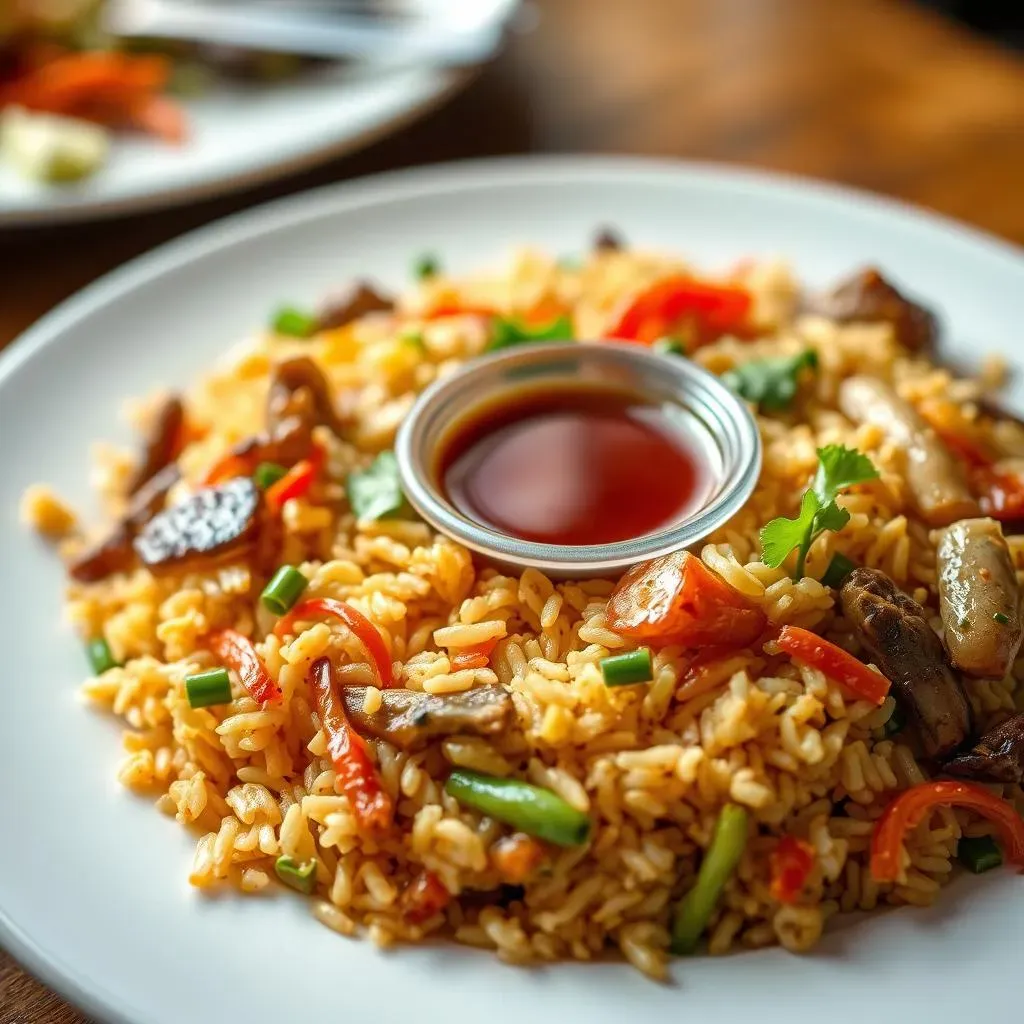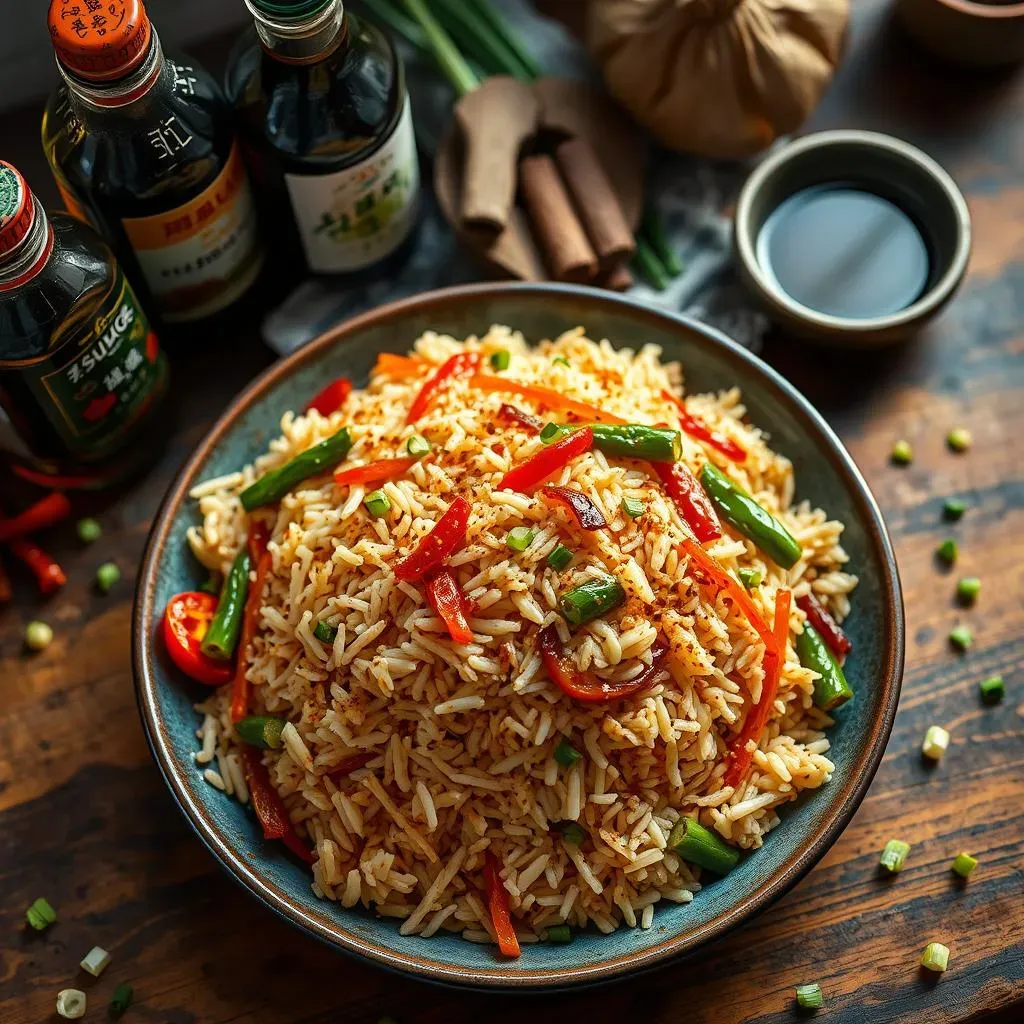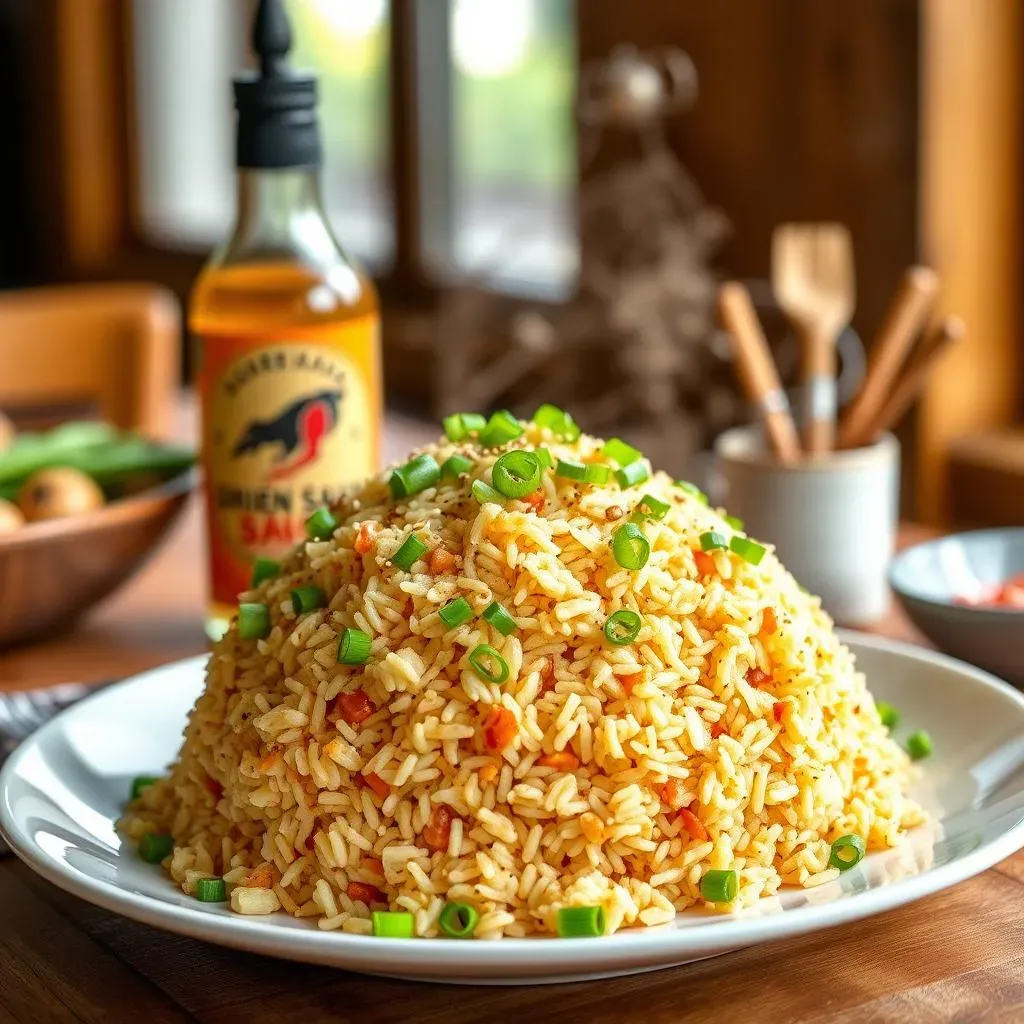Table of Contents
Ever stared into your fridge, craving that perfect fried rice, but feeling lost on what sauce to use? You're not alone. The quest for the ideal fried rice is a delicious journey, and the sauce is the map. Forget bland, boring rice; we're diving deep into the saucy world of fried rice, exploring what makes a truly unforgettable dish. We’ll cover the classics, like soy sauce and sesame oil, but also venture into more adventurous options that’ll make your taste buds sing. This article isn't just about listing sauces; it's about understanding how they work together to create magic in your wok. So, if you’ve ever wondered, "what is the best sauce for fried rice?", get ready. We’re about to unlock the secrets to flavorful, restaurant-quality fried rice right in your own kitchen. We’ll look at the basic building blocks, explore some unique flavor combinations, and give you the knowledge to create your own perfect sauce blend. Let's get cooking!
The Secret to Delicious Fried Rice: Choosing the Right Sauce

The Secret to Delicious Fried Rice: Choosing the Right Sauce
Okay, so you're making fried rice, that's awesome! But let's be real, the sauce is where the magic happens. It's not just about grabbing any old bottle from the fridge. Think of your sauce as the conductor of an orchestra, it brings all the flavors together to create something truly amazing. The right sauce will transform simple ingredients into a dish that's bursting with flavor, while the wrong one can leave you with something pretty forgettable. Choosing the right sauce is about understanding the balance of salty, sweet, umami, and even a little heat, depending on what you're going for. It’s an art, and we're going to explore the palette together.
MustHave Sauces for Fried Rice: Soy Sauce, Sesame Oil, and More

MustHave Sauces for Fried Rice: Soy Sauce, Sesame Oil, and More
The Dynamic Duo: Soy Sauce
First up, we've got soy sauce, the undisputed king of Asian cuisine, and fried rice's best friend. It's not just about saltiness, good quality soy sauce brings depth and umami, that savory flavor that makes your mouth water. Think of it as the foundation, the bassline in your flavor song. There are different types too! Light soy is your everyday go-to, while dark soy adds color and a touch of sweetness, almost like a rich molasses. I always keep both on hand, it’s like having two different paint brushes for the same canvas.
Now, don't be shy when you're using it! I mean, don't go overboard and make a salty mess, but a good few splashes will do the trick. It's also better to add it in stages while you’re cooking, rather than all at once. This way the sauce will blend perfectly with other ingredients. It's a game changer, it really is. It's the backbone of the whole thing, and without it, you're just eating...well, rice.
Sesame Oil: The Aromatic Finisher
Next up, let's talk about sesame oil, this stuff is liquid gold. Unlike soy sauce, you don't need a lot of it, it's potent. A teaspoon or two at the end of cooking will add a nutty, toasty aroma that takes fried rice to a whole new level. Think of it as the finishing touch, the perfume of your dish. I remember the first time I used it, I was like, "Whoa, where have you been all my life?" It's not just a flavor; it's an experience.
It's important to note that you should always use toasted sesame oil, not regular sesame oil. The toasted version has a much richer, deeper flavor that's crucial for that authentic fried rice taste. Also, don't cook with it, it's best added at the end, otherwise, you’ll lose all those lovely aromas. It’s like adding a final flourish to a painting, that little detail that makes all the difference.
Sauce | Flavor Profile | When to Use |
|---|---|---|
Light Soy Sauce | Salty, Umami | During cooking |
Dark Soy Sauce | Salty, Sweet, Rich | During cooking, for color |
Toasted Sesame Oil | Nutty, Toasty, Aromatic | At the end of cooking |
Elevate Your Fried Rice: Exploring Unique and Bold Sauce Options

Elevate Your Fried Rice: Exploring Unique and Bold Sauce Options
Oyster Sauce: The Umami Booster
Alright, let’s talk about taking things up a notch. If you're looking for that extra layer of flavor, oyster sauce is your secret weapon. It’s got this deep, savory, almost meaty taste that adds an incredible richness to your fried rice. It’s not fishy at all, despite its name, it’s more like a concentrated umami bomb. I remember the first time I used it, I was amazed by how much depth it added. It’s like the difference between a black and white movie and one in full color.
A little goes a long way, so don’t go overboard. A tablespoon or two is usually enough for a large batch of fried rice. It’s also important to add it towards the end of cooking, so it doesn’t burn. Oyster sauce is a game-changer if you want to move away from the usual soy sauce flavor profile. It’s the equivalent of adding a secret ingredient that everyone will be asking about.
Sriracha and Chili Garlic Sauce: Adding Heat
Now, for those of you who like a little kick, let's bring in the heat! Sriracha and chili garlic sauce are fantastic for adding that spicy element to your fried rice. Sriracha gives you a bright, tangy heat, while chili garlic sauce brings a deeper, more robust flavor with visible chunks of garlic and chili. I love using both, sometimes together, because each one provides a different kind of heat experience. It’s like turning up the volume on your dish.
Start with a small amount, maybe a teaspoon or two, and then add more to your preference. You can also mix them with other sauces, like soy sauce, to create a more complex flavor profile. Remember, spice is personal, so adjust it to your liking. The great thing about these sauces is that they not only add heat but also a depth of flavor that really elevates your fried rice. It’s like adding a little spark that makes everything more exciting.
Sauce | Flavor Profile | Best Use |
|---|---|---|
Oyster Sauce | Umami, Rich, Savory | Add towards the end of cooking |
Sriracha | Tangy, Bright Heat | Mix with other sauces or add directly |
Chili Garlic Sauce | Deep, Robust Heat with Garlic | Mix with other sauces or add directly |
How to Perfectly Combine Sauces for the Best Fried Rice

How to Perfectly Combine Sauces for the Best Fried Rice
The Art of Layering Flavors
Okay, so now you've got all these amazing sauces, but how do you use them together? It's not about throwing everything in and hoping for the best. Think of it like building a flavor pyramid, you start with a solid base and then add layers on top. The base is usually your soy sauce, it provides that salty, umami foundation. Then you add your sesame oil at the end for that aromatic finish. From there, you can start exploring with other sauces like oyster sauce, sriracha, or chili garlic sauce to create your own unique flavor profile. Remember, it's all about balance. You want to enhance the flavors, not overpower them.
I always start with a smaller amount of each sauce, and then taste as I go, adjusting as needed. It’s like being a chef in your own kitchen, experimenting and creating something that's tailored to your taste. Don't be afraid to try different combinations, you might discover your new favorite sauce blend. The secret is to add sauces in stages, not all at once, this allows each flavor to meld properly and creates a more complex, layered taste. It’s like making a good cup of coffee, you have to do it step by step to get it just right.
Finding Your Perfect Sauce Ratio
Finding the perfect ratio of sauces is a bit like being a scientist in the kitchen, it takes a little experimentation. There's no magic formula that works for everyone because we all have different taste preferences. However, a good starting point is to use soy sauce as your main ingredient, and then add other sauces in smaller amounts. For example, you might use 2 tablespoons of soy sauce, 1 tablespoon of oyster sauce, and ½ teaspoon of sesame oil. Then, you can add a dash of sriracha or chili garlic sauce for a little heat. The key is to taste as you go and adjust the amounts until you find the perfect balance.
Also, consider the other ingredients in your fried rice. If you are using a lot of vegetables, you might want to use a little extra sauce to make sure everything is coated. If you're adding a lot of protein, you might want to lean towards more umami-rich sauces like oyster sauce. It's all about thinking about how the flavors work together. I like to think of it as a dance, each ingredient and sauce is a partner, and they all have to move in harmony. Don’t be afraid to experiment and find what works best for you. The kitchen is your playground, so have fun!
Sauce | Starting Ratio (per serving) | Notes |
|---|---|---|
Soy Sauce | 2 tablespoons | Base flavor, adjust to taste |
Oyster Sauce | 1 tablespoon | Add for umami, don't overdo it |
Sesame Oil | ½ teaspoon | Finishing touch, use sparingly |
Sriracha/Chili Garlic Sauce | ¼ - ½ teaspoon | Adjust to your heat preference |
Tips and Tricks for Sauce Mastery
Alright, let’s get into some tips and tricks that will help you become a sauce master. First, always use good quality sauces. It makes a huge difference in the final flavor. Second, don't be afraid to mix and match. Try combining different sauces to create new and exciting flavor profiles. For example, a mix of soy sauce, oyster sauce, and a touch of sriracha is a classic combination that works great every time. Third, add your sauces in stages. This helps the flavors to meld together and creates a more complex taste. Fourth, taste as you go. This is the most important tip of all, because everyone has different preferences, so adjust the sauce ratio to your liking. It's like being a musician, you have to listen to the music to make sure it sounds good.
Another tip is to use a little bit of water or broth to thin out your sauces if they are too thick. This helps to distribute the sauce more evenly throughout the fried rice and prevents it from becoming too sticky. Also, remember that the heat of your wok or pan also affects the flavor of the sauces, so adjust accordingly. The more you cook, the more you’ll understand how these elements interact, and you’ll find yourself making the best fried rice ever. It’s a journey, and you’re just getting started!